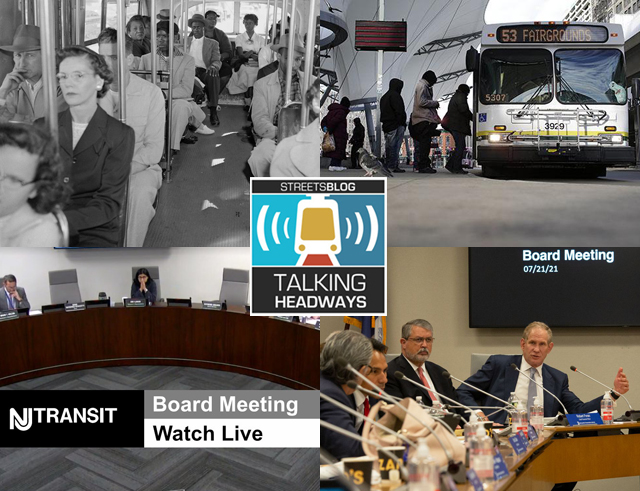This week on the podcast, we’re back at last fall’s virtual Railvolution conference. Former BART GM Grace Crunican moderates a panel discussing the role of board members in transit agencies with former MBTA board member Monica Tibbits-Nutt and former Houston Metro board member Christof Spieler. They talk about how to deal with board members with opposite ideas, how to help agency staff, and using the budget as a policy document.
For those of you who get your news through your eyes and not your ears, there’s an edited transcript below the audio player. If you want a full, unedited transcript (with some typos!), click here. If you want to listen, here you go:
Grace Crunican: Whether you force collection of the money at the front of the bus or at the beginning of the end of the trip, you have a station, you have automatic gates [and other infrastructure]. Everyone has a problem with homelessness at the stations, underneath the infrastructure, on the cars, in the bus itself. As transit-board members, what recommendations do you have on how to approach that? What recommendations do you [have for] transit agencies, or what steps should they take to try and get that discussion on the table and get at some solutions?
Monica Tibbits-Nutt: I think [we need to be] having the discussion independent of safety. Safety is incredibly important. We’ve had a number of times where operators [and] station staff have had interactions, particularly with people who had substance-abuse problems or were struggling with mental issues, having physical confrontations with the frontline staff, having physical confrontations with passengers. That, for the most part, is really what I see in a lot of different areas at different agencies. That’s where the discussion of homelessness is. That’s kind of where it lives or when talking about, in the winter, which stations are going to be allowing homeless people in. We have really nasty weather here.
So that plays out a lot here. But as far as having any discussions about how can we better serve the populations, how can we work with the homeless community to provide better services? How can we work with social workers around providing more transit services for that population, those discussions aren’t had. I think as long as we continue to have these discussions in just that safety standpoint and really safety, not for the homeless population, but just safety for everyone else, we’re not going to be able to address any of these issues. We play a massive part in this because every social issue is on our transit systems and it’s amplified on our transit systems, but I don’t see our industry taking on homelessness at all.
Christof Spieler: I think fundamentally the people most affected by homelessness are the homeless and fundamentally the solution to homelessness is housing, which means we have an issue here which goes beyond what transit agents use can do. Again, that goes to one thing board members can do, which is be involved in these larger policy discussions. I think, secondly, your underlining of that safety thing, it’s almost like there’s two kinds of safety discussions we have on transit. One is legitimate safety discussions, and there are legitimate safety issues on transit. We’ve had been in some really good discussions about sexual harassment on transit. I know that is a very real thing and something that transit agencies need to take much more seriously than they have before.
But sometimes the safety discussions we have are what Dr. Destiny Thomas would call essentially "white comfort" discussions. Is this an actual safety discussion or is this a question of people not being comfortable being on the same train as people who don’t look like them, or being on the same buses with people who don’t look like them? Frankly, oftentimes, that’s when we’re having a safety discussion, that’s what it is. We’re not talking about actual crime. We’re not talking about actual assaults. We’re talking about, there’s a homeless guy on the bus. They are residents of our cities as much as anyone else. And they have a right to be on the bus as much as anyone else. What I’ve really appreciated is the agencies that have moved beyond police as a response to homelessness.
Transit boards can either be a really productive part of that discussion or transit boards can play into that "this is a crime problem" narrative. And I think that’s where board members have to be really careful about which of those discussions they want to have.





